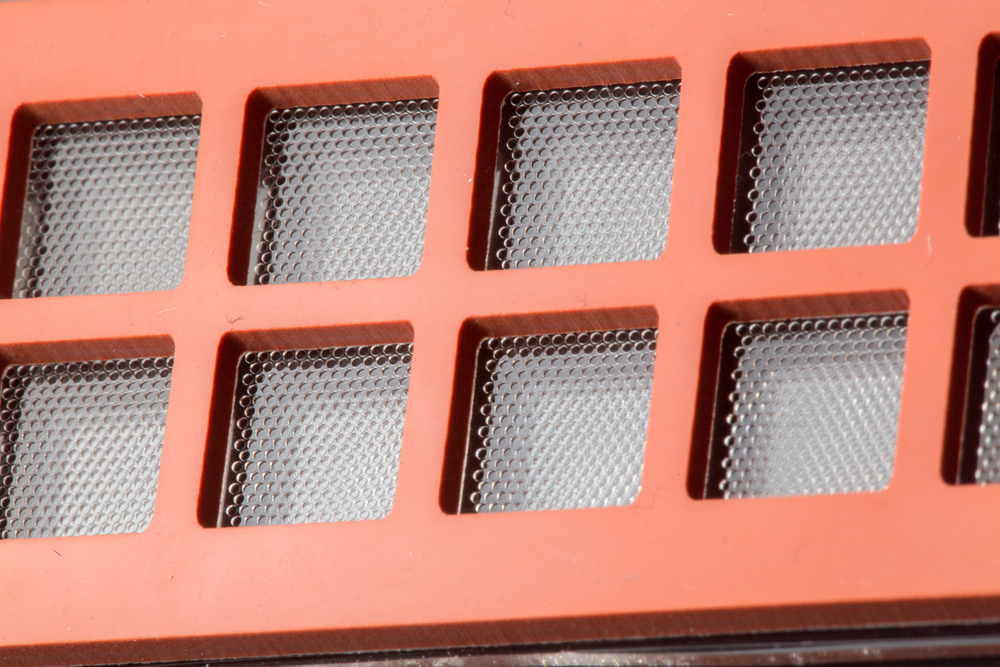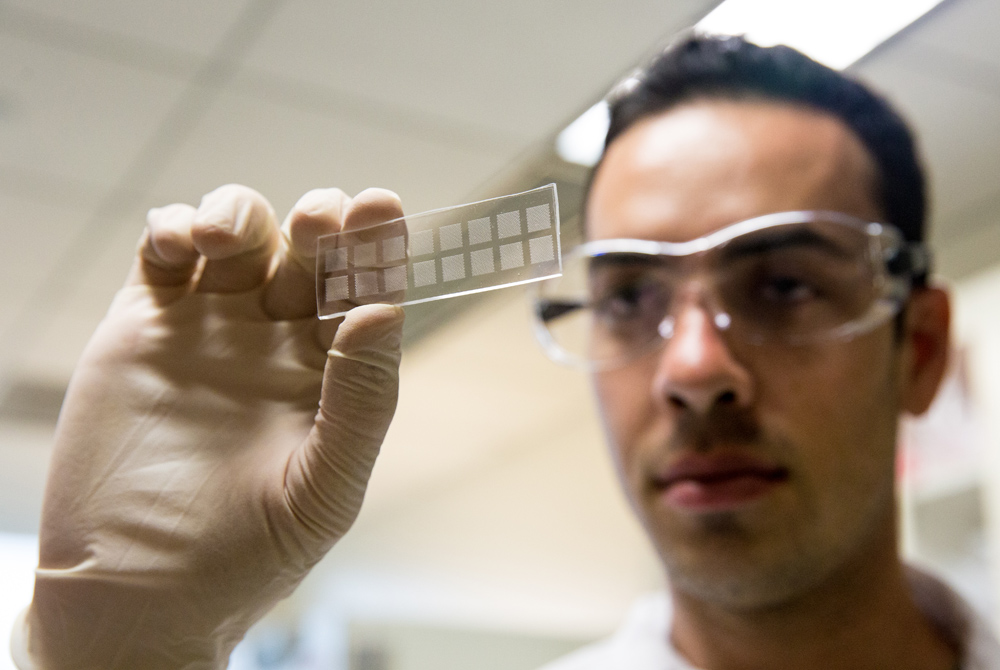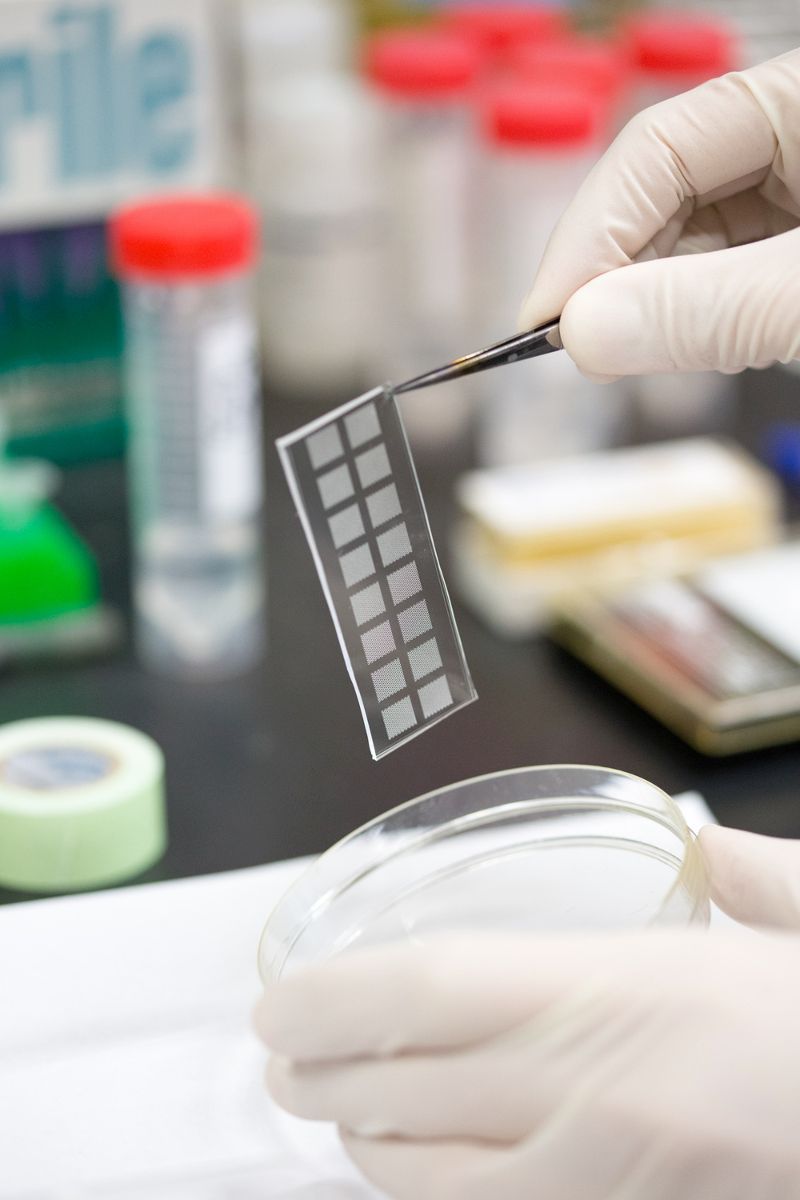Single-Cell Genome Sequencing Gets Better
November 13, 2013 / By Daniel Kane, Jacobs School of Engineering, (858) 5
San Diego, CA, Nov. 13, 2013 — Researchers led by bioengineers at the University of California, San Diego have generated the most complete genome sequences from single E. coli cells and individual neurons from the human brain. The breakthrough comes from a new single-cell genome sequencing technique -- developed in part at the UC San Diego Qualcomm Institute's that confines genome amplification to fluid-filled wells with a volume of just 12 nanoliters.
The study is published in the journal Nature Biotechnology on Nov. 10, 2013. An animated video describing the new approach, which is called the Microwell Displacement Amplification System or MIDAS, is available on YouTube.
“Our preliminary data suggest that individual neurons from the same brain have different genetic compositions. This is a relatively new idea, and our approach will enable researchers to look at genomic differences between single cells with much finer detail,” said Kun Zhang, a professor in the Department of Bioengineering at the UC San Diego Jacobs School of Engineering and the corresponding author on the paper.
|
The researchers report that the genome sequences of single cells generated using the new approach exhibited comparatively little “amplification bias,” which has been the most significant technological obstacle facing single-cell genome sequencing in the past decade. This bias refers to the fact that the amplification step is uneven, with different regions of a genome being copied different numbers of times. This imbalance complicates many downstream genomic analyses, including assembly of genomes from scratch and identifying DNA content variations among cells from the same individual.
Single-cell Genome Sequencing
Sequencing the genomes of single cells is of great interest to researchers working in many different fields. For example, probing the genetic make-up of individual cells would help researchers identify and understand a wide range of organisms that cannot be easily grown in the lab from the bacteria that live within our digestive tracts and on our skin, to the microscopic organisms that live in ocean water. Single-cell genetic studies are also being used to study cancer cells, stem cells and the human brain, which is made up of cells that increasingly appear to have significant genomic diversity.
“We now have the wonderful opportunity to take a higher-resolution look at genomes within single cells, extending our understanding of genomic mosaicism within the brain to the level of DNA sequence, which here revealed new somatic changes to the neuronal genome. This could provide new insights into the normal as well as abnormal brain, such as occurs in Alzheimer's and Parkinson's disease or Schizophrenia,” said Jerold Chun, a co-author and Professor in the Dorris Neuroscience Center at The Scripps Research Institute.
For example, the new sequencing approach identified gains or loss of single copy DNA as small as 1 million base pairs, the highest resolution to date for single-cell sequencing approaches. Recent single-cell sequencing studies have used older techniques which can only decipher DNA copy changes that are at least three to six million base pairs.
Amplification in Nano-Scale Wells
|
Jeff Gole, a recent bioengineering Ph.D. from UC San Diego (photographed) is part of the team that has published a breakthrough single-cell genome sequencing technique that stands to improve our understanding of genomic diversity among cells from the same human brain. Watch a video animation of the new technique here.
The 12 nanoliter (nL) volume microwells in which amplification takes place are some of the smallest volume wells to be used in published protocols for single-cell genome sequencing.
“By reducing amplification reaction volumes 1000-fold to nanoliter levels in thousands of microwells, we increased the effective concentration of the template genome, leading to improved amplification uniformity and reduced DNA contamination,” explained Jeff Gole, the first author on the paper. Gole worked on this project as a Ph.D. student in Kun Zhang's bioengineering lab at the UC San Diego Jacobs School of Engineering. Gole is now a Scientist at Good Start Genetics in Cambridge, Mass.
Compared to the most complete previously published single E. coli genome data set, the new approach recovered 50 percent more of the E. coli genome with 3 to 13-fold less sequencing data.
“The results demonstrate that MIDAS provides a much more efficient way to assemble whole bacterial genomes from single cells without culture,” the authors write in the Nature Biotechnology paper.
Multidisciplinary Research
The new single-cell genome sequencing approach, called Microwell Displacement Amplification System (MIDAS), confines genome amplification to fluid-filled wells with a volume of just 12 nanoliters (pictured).
|
The genomics researchers collaborated with materials science graduate student Yu-Jui (Roger) Chiu on the microfabrication required to create the arrays of microwells. Chiu is working on his Ph.D. in the lab of UC San Diego electrical engineering professor Yu-Hwa Lo, who also directs the Nano3 Labs in UC San Diego's Qualcomm Institute, where microfabrication took place.
“This project would not have succeeded without the fabrication and instrumentation support available at the Jacobs School and the Qualcomm Institute,” said Zhang. “We are very excited about our initial results as well as the possibility that researchers around the world will be able to use this approach in many different contexts.”
Prof. Kun Zhang is the PI on an NIH-funded center dedicated to the analysis and visualization of RNA transcripts – a proxy for gene activity – from individual cells within the human brain.
This project was funded by US National Institutes of Health grants R01HG004876, R01GM097253, U01MH098977 and P50HG005550, and National Science Foundation grant OCE-1046368.
A patent application has been filed, and UC San Diego is seeking commercial partners to license and develop this innovation into useful products. For information, contact: invent@ucsd.edu
“Massively parallel polymerase cloning and genome sequencing of single cells using nanoliter microwells,” in Nature Technology by: Jeff Gole (1), Athurva Gore (1), Andrew Richards (1), Yu-Jui Chiu (2), Ho-Lim Fung (1), Diane Bushman (3), Hsin-I Chiang (1,5), Jerold Chun (3), Yu-Hwa Lo (4), Kun Zhang (1)
(1) = Department of Bioengineering, Institute for Genomic Medicine and Institute of Engineering in Medicine, University of California, San Diego
(2) = Materials Science and Engineering Program, University of California, San Diego
(3) = Dorris Neuroscience Center, Molecular and Cellular Neuroscience Department, The Scripps Research Institute
(4) = Department of Electrical and Computer Engineering, University of California, San Diego,
(5) = Present address: Department of Animal Science, National Chung Hsing University
Related Links
Kun Zhang bioengineering lab at UC San Diego
Media Contacts
Daniel Kane, Jacobs School of Engineering, (858) 534-3262, dbkane@ucsd.edu




